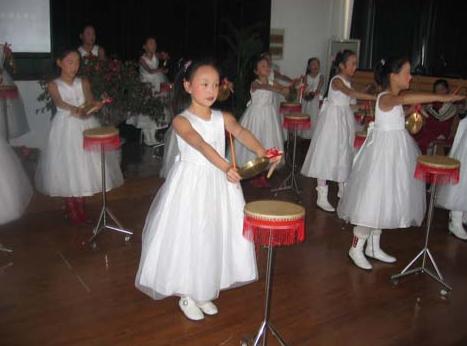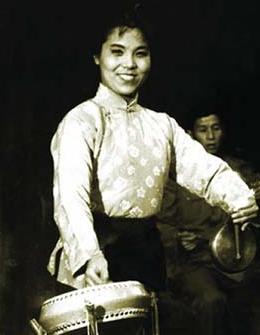
Gong-drum song (taibao shu) used to be called "Taibao song". "Taibao" derived from "Taibu" (imperial divination), a ceremony for the blessing of peace in suburban counties and rural areas of Shanghai. Because the performer sang stories while beating gong and drum on his own, the gong-drum song was also popularly known as "gong song" and "divine drum song". "Taibu" was similar to Taoist rites. It was held to expel pestilence by means of storytelling and singing, like speaking, chanting, soloing and antiphonal singing. The contents were folklores and historical stories. Irrelevant to the religious rites, they were used just for the purpose of entertainment. As time passed by, the performance gradually grew out of the religious ceremony, and became an independent and popular form of storytelling and singing.

Gong-drum song is basically performed through the form of singing while beating gong and drum on one's own. At first, there was only one performer who sat to play. In the late 1950s, the performance form gradually changed into the way that two or more performers stand to sing, speak and even perform. And the accompanying instruments also extended to Chinese lute, cymbalo and some other instruments for a silk-string band. The major performance form is one playing with a band.
Programs of gong-drum song mostly performed are medium and full-length traditional ones. Traditional programs are classified into "xiao shu" (singing-focused) and "da shu" (storytelling-focused), but the former ones are the majority. The contents are largely taken from folklores, historical novels, family ethical stories and historical stories, so they are rich in local flavor and regional features.





